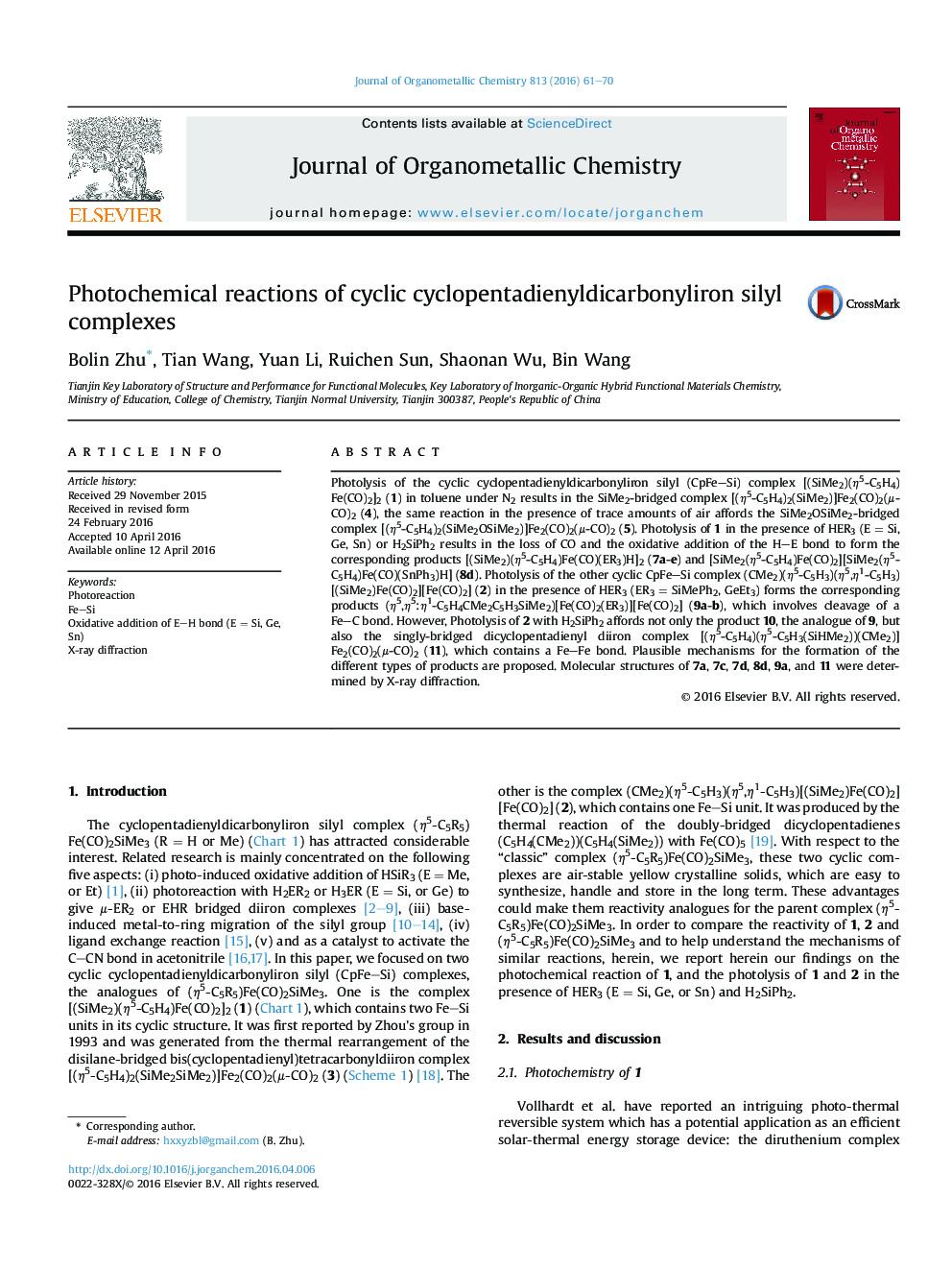| Article ID | Journal | Published Year | Pages | File Type |
|---|---|---|---|---|
| 1321749 | Journal of Organometallic Chemistry | 2016 | 10 Pages |
•Photo-induced oxidative addition of HER3 (E = Si, Ge, or Sn) and H2SiPh2.•Photolysis of 2 in the presence of HER3 results in cleavage of a FeC bond in 2.•A plausible mechanism was proposed for formation of a FeFe-bonded complex 11.•Molecular structures of 7a, 7c, 7d, 8d, 9a, and 11 were determined by X-ray diffraction.
Photolysis of the cyclic cyclopentadienyldicarbonyliron silyl (CpFe–Si) complex [(SiMe2)(η5-C5H4)Fe(CO)2]2 (1) in toluene under N2 results in the SiMe2-bridged complex [(η5-C5H4)2(SiMe2)]Fe2(CO)2(μ-CO)2 (4), the same reaction in the presence of trace amounts of air affords the SiMe2OSiMe2-bridged complex [(η5-C5H4)2(SiMe2OSiMe2)]Fe2(CO)2(μ-CO)2 (5). Photolysis of 1 in the presence of HER3 (E = Si, Ge, Sn) or H2SiPh2 results in the loss of CO and the oxidative addition of the H–E bond to form the corresponding products [(SiMe2)(η5-C5H4)Fe(CO)(ER3)H]2 (7a-e) and [SiMe2(η5-C5H4)Fe(CO)2][SiMe2(η5-C5H4)Fe(CO)(SnPh3)H] (8d). Photolysis of the other cyclic CpFe–Si complex (CMe2)(η5-C5H3)(η5,η1-C5H3)[(SiMe2)Fe(CO)2][Fe(CO)2] (2) in the presence of HER3 (ER3 = SiMePh2, GeEt3) forms the corresponding products (η5,η5:η1-C5H4CMe2C5H3SiMe2)[Fe(CO)2(ER3)][Fe(CO)2] (9a-b), which involves cleavage of a FeC bond. However, Photolysis of 2 with H2SiPh2 affords not only the product 10, the analogue of 9, but also the singly-bridged dicyclopentadienyl diiron complex [(η5-C5H4)(η5-C5H3(SiHMe2))(CMe2)]Fe2(CO)2(μ-CO)2 (11), which contains a FeFe bond. Plausible mechanisms for the formation of the different types of products are proposed. Molecular structures of 7a, 7c, 7d, 8d, 9a, and 11 were determined by X-ray diffraction.
Graphical abstractPhotolysis of two cyclic cyclopentadienyldicarbonyliron silyl complexes 1 and 2 in the presence of HER3 (E = Si, Ge, or Sn) and H2SiPh2 was studied, in which photolysis of 2 with excess H2SiPh2 afforded 10 and a FeFe-bonded product 11. A plausible mechanism for the formation of 10 and 11 was proposed.Figure optionsDownload full-size imageDownload as PowerPoint slide
